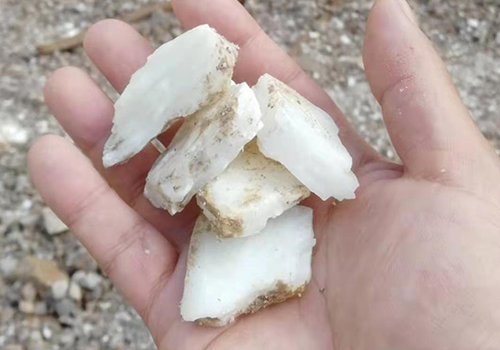Guizhou barite is a kind of sulfate mineral, which has the characteristics of high density, good filling, hardly soluble in water and acids, non-toxicity, absorption of rays, stable chemical and thermodynamic properties, etc., and is an important non-metallic mineral resource. . Barite has a wide range of applications, covering chemical, electronics, building materials, metallurgy, textile, and pharmaceutical industries. Effect, thereby stabilizing oil and gas production and preventing blowout accidents. Secondly, as a barium chemical raw material (5% to 10%), basic barium salts (barium sulfate, barium chloride, barium carbonate) are produced, and various barium compounds such as zinc barium white, barium hydroxide, and barium oxide are prepared. Other uses include fillers, mineralizers for cement, etc. (<5%). In the past ten years, China's barite resources have been abundant, and supply exceeds demand, and most of them have been exported. China's barite resource reserves and exports rank first in the world, and its apparent consumption is second only to the United States, ranking second. China's role in the global barite market is irreplaceable.

Global barite resources are abundant, and their distribution is relatively concentrated. According to statistics, the global barite reserves in 2015 were 380 million tons, of which China, Kazakhstan, Turkey, India, and Iran are rich in barite resources. The total reserves of the five countries account for 73% of the world's total. China's barite resources rank first in the world, of which 82% of the identified reserves are distributed in Guizhou (34%), Hunan (21%), Guangxi (14%), Gansu (7%), and Shaanxi (6%) Five provinces. The type of barite deposits in China is relatively simple and can be divided into three types: sedimentary type, hydrothermal type, and residual slope type. The development and utilization of barite ore in China is low, and the resource consumption is small.
Most of China's barite is exported in the form of raw ore and barium salt products. The main target countries are the United States, Saudi Arabia, and the Netherlands. Barite's international trade flow has always been from China to the Gulf of Mexico. China is the world ’s largest barite exporter, and the United States is the world ’s major barite importer. China and the United States are the larger suppliers (producers) and consumers (consumers) of barite worldwide.
Europe has gathered the world ’s largest manufacturers of coatings, polymers, and automobiles, so it may continue to be the world ’s largest consumer of non-drilling barite. In Asia, as Kazakhstan, Turkey, Pakistan and other countries have identified a substantial increase in the reserves of barite, it is expected that the main barite production and supply in the future will still be in Asia. This pattern of supply and demand is basically stable and will not change for some time to come.
China's barite ore is of high quality and abundant reserve resources, and is China's dominant mineral. As the largest producer and second largest consumer of barite in the world, China has always been export-oriented, and domestic consumption is mainly used for oil and gas exploration. With the development of the global economy, although it will be temporarily affected by the economic crisis, in the long run, demand for oil and gas will continue to rise. At the same time, the market for barium chemical-related industries has gradually picked up. As an important raw material for the products of the above industries, barite will continue to rise in output and demand.